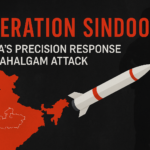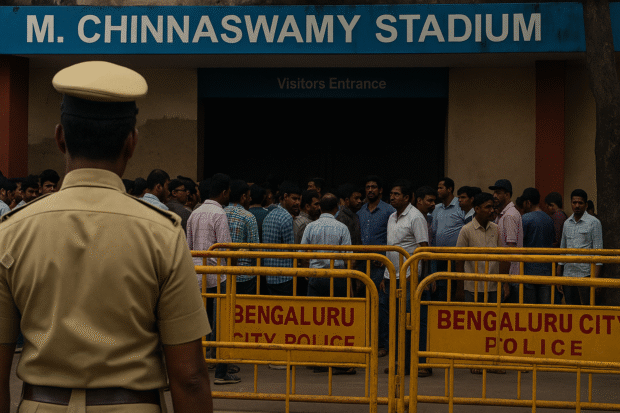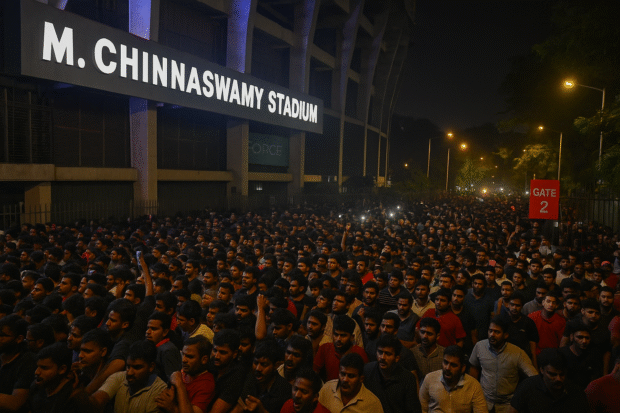
Tensions between India and Pakistan have once again reached a critical point as Operation Sindoor continues in response to a brutal terror attack in Indian-administered Kashmir. This latest development in the long-standing India Pakistan conflict has reignited fears of a wider confrontation, with airstrikes, military retaliation, and civilian displacement dominating the latest India Pakistan news headlines.
Background: The Catalyst for Operation Sindoor
The military offensive was initiated following a deadly terrorist attack in the Pahalgam region of Jammu & Kashmir that left over two dozen civilians dead. The Indian government held Pakistan-based terror groups responsible, prompting immediate and coordinated military action under the banner of Operation Sindoor.
This strategic operation has targeted several suspected terrorist camps in Pakistan-administered territory, including areas believed to harbor key operatives of groups like Jaish-e-Mohammed and Lashkar-e-Taiba.
Precision Strikes and Military Strategy
India’s air campaign has reportedly involved state-of-the-art fighter jets including Rafales, employing precision-guided munitions in a 23-minute strike window. These highly coordinated strikes were focused on minimizing collateral damage while neutralizing high-value targets linked to terrorist infrastructure.
The Indian Armed Forces have declared that Operation Sindoor is a “measured and focused military response” and not aimed at civilian or core military facilities within Pakistan. Officials have reiterated that the operation seeks to dismantle the support system of terror outfits operating from across the border.
Pakistan’s Military Response and Escalation
In retaliation, Pakistan launched drone and missile strikes on multiple Indian cities, including Amritsar, Jammu, and Udhampur. The Indian defense system, including S-400 and Akash missile defense platforms, intercepted the majority of incoming threats.
The situation escalated into a digital and drone warfare scenario, with both nations deploying unmanned aerial vehicles and AI-driven defense systems to detect and neutralize threats. Despite Pakistan claiming the downing of Indian jets and drones, Indian authorities have refuted these claims and emphasized the success of defensive countermeasures.
Rising Civilian Concerns Amid Operation Sindoor
While the military remains engaged in cross-border operations, the human cost of this ongoing India Pakistan war is mounting. Border villages in Jammu and Kashmir have turned into conflict zones, with civilians being evacuated as a precaution.
Hospitals in affected areas are struggling with the influx of casualties. Humanitarian agencies have raised alarms over the lack of access to basic amenities, especially in forward locations. Reports from the ground indicate severe disruption to civilian life, including damage to schools, places of worship, and residential infrastructure.
India’s Nationwide Preparedness and Internal Mobilization
To prepare for potential escalations, India has activated nationwide emergency drills, evacuation protocols, and civil defense preparedness initiatives. Strategic infrastructures, including railways, hospitals, and key communication lines, are now operating under heightened security.
India’s civil defense operations have also rolled out public awareness campaigns and local command centers in border states to manage resources and emergency responses more efficiently.
International Reactions and Diplomatic Pressure
As Operation Sindoor progresses, the global community has urged restraint from both sides. Calls for de-escalation have poured in from global powers, expressing concern over the potential for broader regional instability.
Despite international appeals, India has made it clear that it reserves the right to protect its sovereignty and citizens. Indian officials have emphasized that Operation Sindoor will continue until the root infrastructure of cross-border terrorism is dismantled.
Economic and Strategic Impact
Apart from the military and humanitarian consequences, India Pakistan news is also focusing on the geopolitical and economic implications of the ongoing conflict. Financial markets have shown volatility, especially in sectors connected to defense, energy, and aviation.
Analysts believe that extended military operations could impact bilateral trade, cross-border agreements, and foreign investment in both countries. The risk of cyber-attacks and digital warfare also looms large, with defense analysts highlighting the role of AI in future combat strategies.
Conclusion: What Lies Ahead
As the situation along the Line of Control remains volatile, the road to peace appears distant. Operation Sindoor has emerged as a defining chapter in the evolving dynamics of the India Pakistan war. While India continues to stress the non-escalatory nature of its actions, Pakistan’s counter-response shows no signs of backing down.
With thousands displaced, cities on high alert, and military readiness at its peak, the international community watches closely. Whether diplomacy can contain the flames or the situation escalates further will depend on developments in the coming days.
Read: Operation Sindoor: India’s Precision Response to Pahalgam Attack

















Be the first to leave a comment